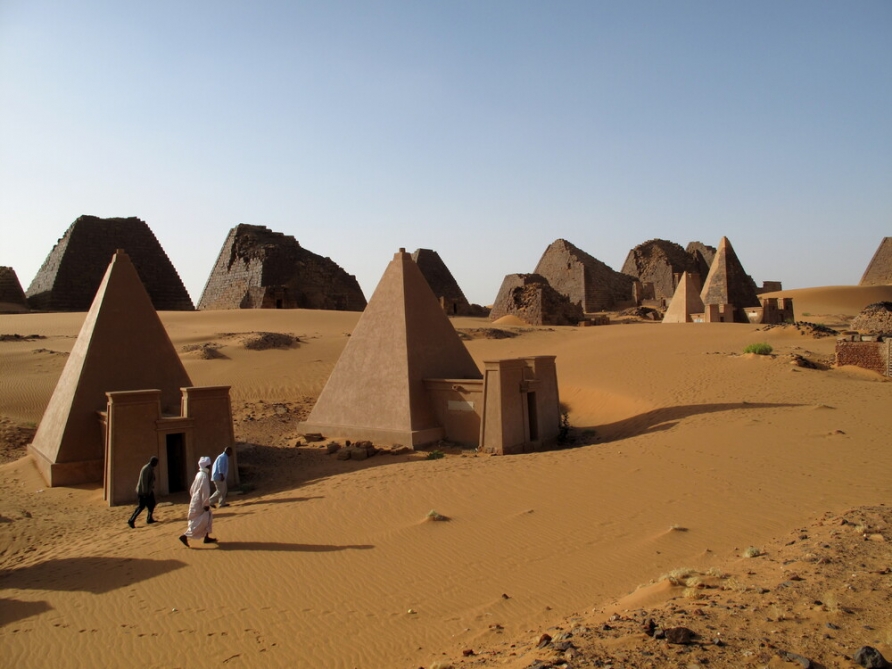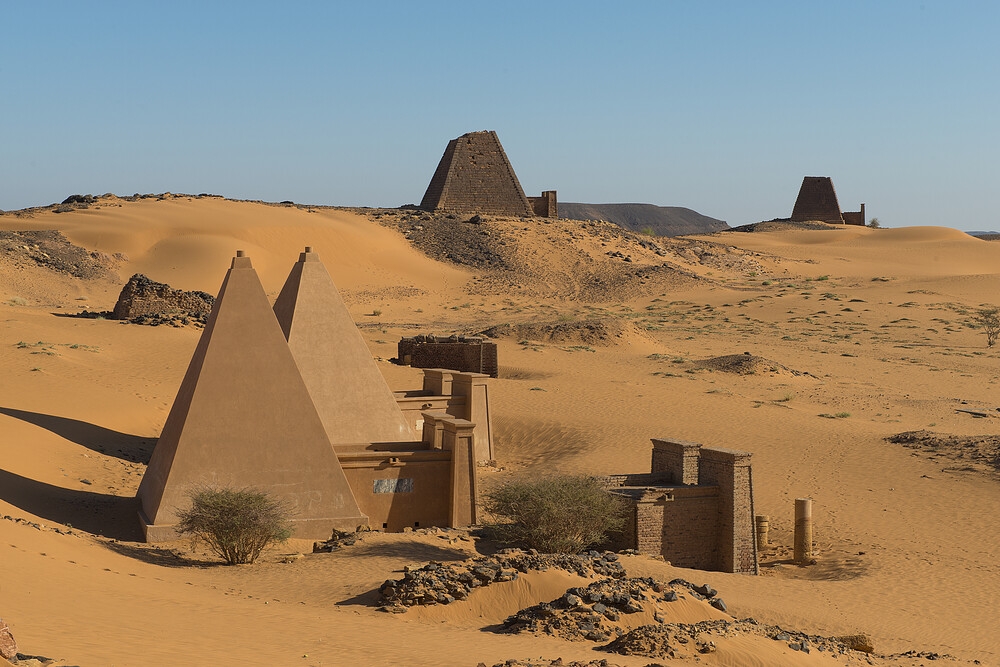
The Archaeological Sites of the Island of Meroe, a semi-desert landscape between the Nile and Atbara rivers, was the heartland of the Kingdom of Kush, a major power from the 8th century B.C. to the 4th century A.D.
The property consists of the royal city of the Kushite kings at Meroe, near the River Nile, the nearby religious site of Naqa and Musawwarat es Sufra.
It was the seat of the rulers who occupied Egypt for close to a century and features, among other vestiges, pyramids, temples and domestic buildings as well as major installations connected to water management.
Their vast empire extended from the Mediterranean to the heart of Africa, and the property testifies to the exchange between the art, architectures, religions and languages of both regions.
The property consists of three separate site components, Meroe, the capital, which includes the town and cemetery site, and Musawwarat es-Sufra and Naqa, two associated settlements and religious centres.
The Meroe cemetery, Musawwarat es-Sufra, and Naqa are located in a semi-desert, set against reddish-brown hills and contrasting with the green bushes that cover them, whilst the Meroe town site is part of a riverine landscape.
These three sites comprise the best preserved relics of the Kingdom of Kush, encompassing a wide range of architectural forms, including pyramids, temples, palaces, and industrial areas that shaped the political, religious, social, artistic and technological scene of the Middle and Northern Nile Valley for more than 1000 years (8th century BC-4th century AD).
These architectural structures, the applied iconography and evidence of production and trade, including ceramics and iron-works, testify to the wealth and power of the Kushite State.
The water reservoirs in addition contribute to the understanding of the palaeoclimate and hydrological regime in the area in the later centuries BCE and the first few centuries CE.
The Archaeological Sites of the Island of Meroe reflect the interchange of ideas and contact between Sub-Saharan Africa and the Mediterranean and Middle Eastern worlds, along a major trade corridor over a very long period of time. The interaction of local and foreign influences is demonstrated by the preserved architectural remains and their iconography.
The property with its wide range of monument types, well preserved buildings, and potential for future excavation and research, contributes an exceptional testimony to the wealth and power of the former Kushite state and its extensive contacts with African, Mediterranean and Middle Eastern societies. The Kushite civilization was largely expunged by the arrival of Christianity on the Middle Nile in the 6th century CE.
The pyramids at Meroe are outstanding examples of Kushite funerary monuments, which illustrate the association with the well preserved remains of the urban centre of the Kushite capital city, Meroe.
The architectural remains at the three site components illustrate the juxtaposition of structural and decorative elements from Pharaonic Egypt, Greece, and Rome as well as from Kush itself, and through this represent a significant reference of early exchange and diffusion of styles and technologies.


